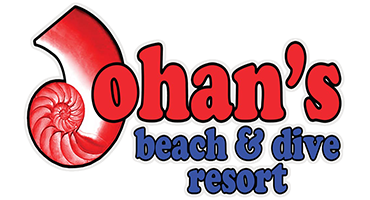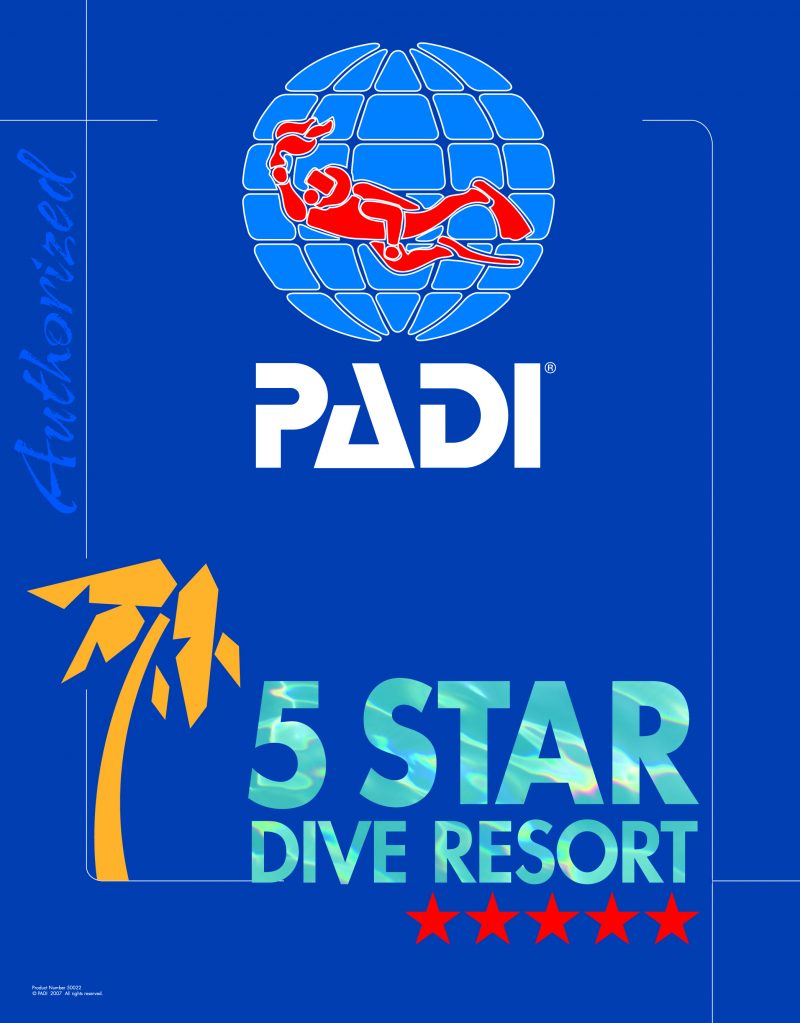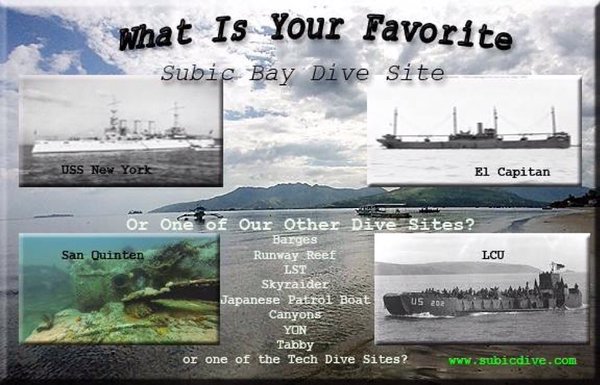Nitrox Diving Subic Bay
 While you prepare your gear for a dive, you might see a few divers with dive cylinders marked Nitrox. You will see them attaching a small device to the cylinder, take a reading and recording the information. They are verifying the oxygen content of their tanks, a step in preparing to dive with Enriched Air Nitrox. One of the benefits of EAN is extended bottom time. Dive tables will tell you that on air you can stay at the top deck (95 feet/29 meters) of the LST for 20 minutes before exceeding the NDL. Using EAN-36, you can stay 37 minutes before reaching the NDL.
While you prepare your gear for a dive, you might see a few divers with dive cylinders marked Nitrox. You will see them attaching a small device to the cylinder, take a reading and recording the information. They are verifying the oxygen content of their tanks, a step in preparing to dive with Enriched Air Nitrox. One of the benefits of EAN is extended bottom time. Dive tables will tell you that on air you can stay at the top deck (95 feet/29 meters) of the LST for 20 minutes before exceeding the NDL. Using EAN-36, you can stay 37 minutes before reaching the NDL.

Is Nitrox really better?
Nitrox diving has been a part of recreational diving for over 25 years, still, it is something than many do not understand or they treat it as a new fad. Even the name is confusing to some. Nitrox simply stands for Nitrogen- oxygen, which is the air that we breathe. Normally we find that the surrounding air is 21% oxygen and 79% nitrogen. There are trace amounts of other gasses as well. A number following the word is used to show a change in the oxygen content. While Nitrox can have a lower oxygen contend, in recreational diving we use Enhanced Air Nitrox meaning the oxygen content is greater than normal air. EAN is followed by a two digit number that represents the percentage of oxygen. EAN-32 and EAN-36 are the most common blends used in recreational diving, and were the blends introduced as Nitrox1 and Nitrox2 by NOAA when they establish the first Nitrox training for recreational divers. As we blend our own Nitrox, We can give EAN certified recreational divers blends up to 40%.
Advantages of Nitrox diving.
Nitrogen has different properties under pressure, most you learned about in your open water training. Under pressure, nitrogen will enter your blood stream. If you return to the surface too soon, molecules of nitrogen can be trapped in your blood stream causing DCS as they expand. When you dive with a EAN bleed the percent of nitrogen is lower allowing less to enter your blood stream. We can benefit from this in one of three ways:
- Equivalent Air Depth (EAD). The EAD is a risk comparison between air and an EAN. If I was using air, I could stay at 18 meters for abut 45 minutes before I reached my NDL. If I was using EAN36, I could dive at 25 meters for 45 minutes before I reached my NDL. So I can dive deeper using the same dive time.
- Extended bottom time. We can look at the same conditions from another view point. If I am on air and dive to 25 meters, my NDL is 29 minutes, while my NDL at that depth using EAN 26 is 45 minutes about 50% longer. So I can dive longer using the same depth.
- Increase safety. If I plan my dive using air tables but dive Nitrox, the body will be absorbing less nitrogen than the tables predict. This gives a more conservative profile, ideal for those at a higher risk.
Dives shallower than 60 feet/ 18 meters do not need the benefits of diving EAN as the air consumption is the limiting factor and seldom NDL. EAN-XX is highly recommended on The USS New York, Japanese Patrol Boat, Deeper Barges, Sky Raider and the concrete wreck.
Disadvantages of Nitrox diving.
There is one major disadvantage of EAN. That is at increased partial pressure oxygen becomes a toxin. With normal air, that does not happen till you are below 250 feet. That is well below the limits of recreational diving. Studies have shown that a PP of 1.6 is the maximum that most divers can dive too before symptoms of oxygen toxicity starts to appear. The dive industry suggest a maximum of 1.4pp for dives. Divers using the recreational limit of 40% can only dive to 82 feet/25 meters safely using the recreational 1.4 limit. This 82 feet/25 is called the Maximum Operating Depth -MOD. The MOD is what you see the Nitrox divers verifying before each dive, checking the percentage of oxygen and calculating the MOD, then recording it on a sticker on the tank itself. Divers going no deeper than the top deck of the LST will find that EAN36 is their best choice.
Training Required
EAN requires a special certification. The Enriched Air Nitrox course has a short but important knowledge segment and two open water dives. There is no confined water exercise. The EAN related task are all above water as once the dive plan is complete the dive follows all other dive procedures. The EAN course can be combined with most other PADI courses with just one extra dive required.
Enriched Air Diver (junior 12 years) no dives – P6000.00 inclusive 2 dives P8500.00
Both courses plus P4000 book with computer dive simulator or book with tables and if no knowledge of dive computers the computer diving book at P2000.





